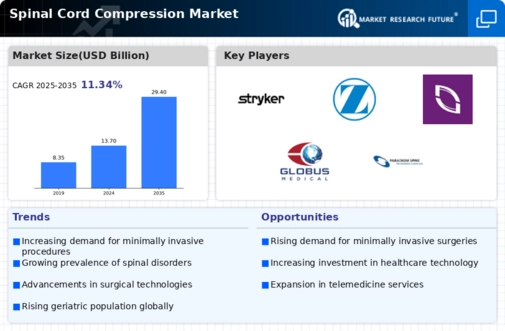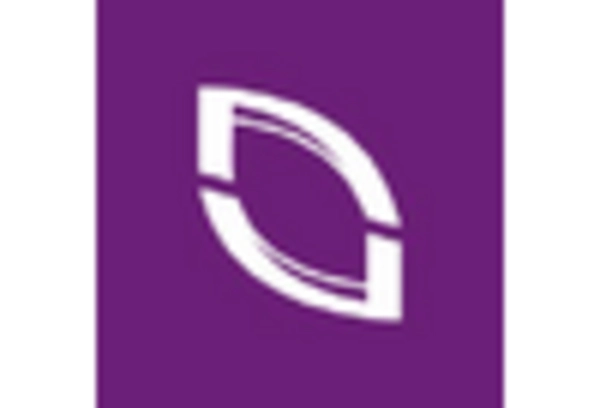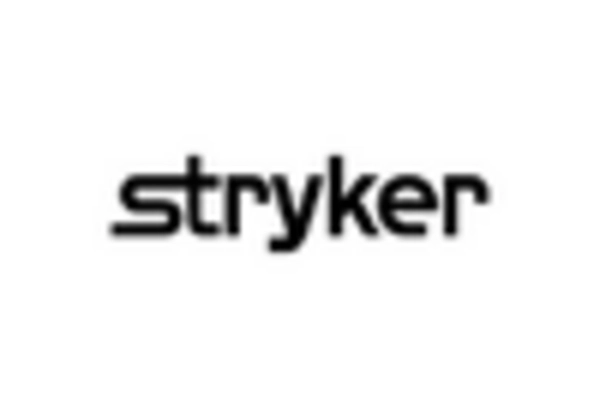-
Report Prologue
-
Market Introduction
-
Introduction 17
-
Scope Of Study 17
-
Research Objective
-
Assumptions & Limitations 18
- Assumptions
- Limitations 18
-
Research Methodology
-
Primary Research Methodology 20
-
Secondary Research Methodology
-
Market Share Analysis 21
-
Market Pricing Approach
-
Market Dynamics
-
Introduction 23
-
Drivers
- Increasing Prevalence Of Diseases Such As Spinal Stenosis, Cancer,
- Favourable Reimbursement
- Rising Demands
-
And Others Will Drive The Market Growth 24
-
Policies Are Indicated To Drive The Market Growth 25
-
For Minimally Invasive Therapeutic Surgical Procedures And Growing Geriatric Population
-
Restraints 27
- High Therapeutic Surgery Cost And
- Lack Of
- Increasing Use Of Minimally Invasive Procedures For
-
Risks Of Complication Will Restrain The Market Growth 27
-
Skilled Physicians For Operating Spinal Decompression Devices 28
-
Mega Trend 29
-
The Treatment Of Spinal Decompression 29
-
Macroeconomic Indicators
-
Market Factor Analysis
-
Value Chain Analysis 30
- Primary Activities 30
- Secondary Activities 31
-
Porters Five Forces Model 32
-
Bargaining Power Of Suppliers
-
Bargaining Power Of Buyers 33
-
Threat Of New Entrants
-
Threat Of Substitutes 33
-
Intensity Of Rivalry 34
-
Demand And Supply Gap Analysis 34
-
Pricing Analysis 35
-
Spinal Cord Compression Market, By Type
-
Introduction 36
-
Lumbar Spinal Stenosis 37
-
Cervical Stenosis 38
-
Central Stenosis 38
-
Spinal Cord Compression Market, By Diagnosis
-
Introduction 39
-
Physical Examination 40
-
Imaging 41
-
Spinal Cord Compression Market, By Treatment Type
-
Introduction 42
-
Surgical Treatment 43
-
Non-Surgical
-
Treatment (Drugs & Therapy) 44
-
Spinal Cord Compression Market,
-
By End User
-
Introduction 45
-
Hospitals 46
-
Ambulatory Surgical Centers 47
-
Rehabilitation Centers 47
-
Global Spinal Cord Compression Market, By Region
-
Introduction
-
Americas 49
-
Spinal Cord Compression Market, By Type
-
Spinal Cord Compression Market, By Diagnosis
-
Spinal Cord Compression
-
Market, By Treatment Type
-
Spinal Cord Compression Market, By End User
-
North America 53
-
Spinal Cord Compression Market, By Type
-
Spinal Cord Compression Market, By Diagnosis
-
Spinal Cord Compression
-
Market, By Treatment Type
-
Spinal Cord Compression Market, By End User
-
US 53
-
Spinal Cord Compression Market, By Type
-
Spinal Cord Compression Market, By Diagnosis
-
Spinal Cord Compression
-
Market, By Treatment Type
-
Spinal Cord Compression Market, By End User
-
Canada 55
-
Spinal Cord Compression Market, By Type
-
Spinal Cord Compression Market, By Diagnosis
-
Spinal Cord Compression
-
Market, By Treatment Type
-
Spinal Cord Compression Market, By End User
-
South America 58
-
Spinal Cord Compression Market, By Type
-
Spinal Cord Compression Market, By Diagnosis
-
Spinal Cord Compression
-
Market, By Treatment Type
-
Spinal Cord Compression Market, By End User
-
Europe 61
-
Spinal Cord Compression Market, By Type
-
Spinal Cord Compression Market, By Diagnosis
-
Spinal Cord Compression
-
Market, By Treatment Type
-
Spinal Cord Compression Market, By End User
-
Germany 64
-
Spinal Cord Compression Market, By Type
-
Spinal Cord Compression Market, By Diagnosis
-
Spinal Cord Compression
-
Market, By Treatment Type
-
Spinal Cord Compression Market, By End User
-
France 66
-
Spinal Cord Compression Market, By Type
-
Spinal Cord Compression Market, By Diagnosis
-
Spinal Cord Compression
-
Market, By Treatment Type
-
Spinal Cord Compression Market, By End User
-
UK 69
-
Spinal Cord Compression Market, By Type
-
Spinal Cord Compression Market, By Diagnosis
-
Spinal Cord Compression
-
Market, By Treatment Type
-
Spinal Cord Compression Market, By End User
-
Italy 71
-
Spinal Cord Compression Market, By Type
-
Spinal Cord Compression Market, By Diagnosis
-
Spinal Cord Compression
-
Market, By Treatment Type
-
Spinal Cord Compression Market, By End User
-
Spain 74
-
Spinal Cord Compression Market, By Type
-
Spinal Cord Compression Market, By Diagnosis
-
Spinal Cord Compression
-
Market, By Treatment Type
-
Spinal Cord Compression Market, By End User
-
Spinal Cord Compression Market,
-
By Type
-
Rest Of Western Europe 76
-
Spinal Cord Compression Market, By Diagnosis
-
Spinal
-
Cord Compression Market, By Treatment Type
-
Spinal Cord Compression Market,
-
By End User
-
Spinal Cord Compression
-
Eastern Europe 78
-
Market, By Type
-
Spinal Cord Compression Market, By Diagnosis
-
Spinal Cord Compression Market, By Treatment Type
-
Spinal Cord Compression
-
Market, By End User
-
Asia-Pacific 81
-
Spinal Cord Compression
-
Market, By Type
-
Spinal Cord Compression Market, By Diagnosis
-
Spinal Cord Compression Market, By Treatment Type
-
Spinal Cord Compression
-
Market, By End User
-
Spinal Cord Compression
-
Japan 84
-
Market, By Type
-
Spinal Cord Compression Market, By Diagnosis
-
Spinal Cord Compression Market, By Treatment Type
-
Spinal Cord Compression
-
Market, By End User
-
Spinal Cord Compression
-
China 87
-
Market, By Type
-
Spinal Cord Compression Market, By Diagnosis
-
Spinal Cord Compression Market, By Treatment Type
-
Spinal Cord Compression
-
Market, By End User
-
Spinal Cord Compression
-
India 89
-
Market, By Type
-
Spinal Cord Compression Market, By Diagnosis
-
Spinal Cord Compression Market, By Treatment Type
-
Spinal Cord Compression
-
Market, By End User
-
Spinal Cord Compression
-
Australia 92
-
Market, By Type
-
Spinal Cord Compression Market, By Diagnosis
-
Spinal Cord Compression Market, By Treatment Type
-
Spinal Cord Compression
-
Market, By End User
-
Spinal Cord Compression
-
South Korea 94
-
Market, By Type
-
Spinal Cord Compression Market, By Diagnosis
-
Spinal Cord Compression Market, By Treatment Type
-
Spinal Cord Compression
-
Market, By End User
-
Spinal
-
Rest Of Asia-Pacific 97
-
Cord Compression Market, By Type
-
Spinal Cord Compression Market, By Diagnosis
-
Spinal Cord Compression Market, By Treatment Type
-
Spinal Cord
-
Compression Market, By End User
-
Middle East & Africa 100
-
Spinal Cord Compression Market, By Type
-
Spinal Cord Compression
-
Market, By Diagnosis
-
Spinal Cord Compression Market, By Treatment Type
-
Spinal Cord Compression Market, By End User
-
Middle East
-
Spinal Cord Compression Market, By Type
-
Spinal Cord Compression
-
Market, By Diagnosis
-
Spinal Cord Compression Market, By Treatment Type
-
Spinal Cord Compression Market, By End User
-
Africa 106
-
Spinal Cord Compression Market, By Type
-
Spinal Cord Compression
-
Market, By Diagnosis
-
Spinal Cord Compression Market, By Treatment Type
-
Spinal Cord Compression Market, By End User
-
Competitive Landscape
-
Introduction 109
-
Company Share Analysis 110
-
Company Profile
-
Medtronic 111
- Company Overview
- Financials 111
- Products 111
- Key Developments 111
-
Key Strategies 111
-
Johnson
- Company Overview 112
- Financials 112
- Products 112
- Key Strategies
- Key Developments 112
-
& Johnson Services Inc. 112
-
Stryker 113
- Company Overview 113
- Financials 113
- Key Strategies 113
- Key Developments
-
Products 113
-
Zimmer Biomet 114
- Company Overview 114
- Financials 114
- Products 114
- Key
- Key Developments 114
-
Strategies 114
-
NuVasive,
- Company Overview 115
- Financials 115
- Products 115
- Key Strategies 115
-
Inc. 115
-
Key Developments 115
-
Globus Medical Inc. 116
- Company
- Financials 116
- Products 116
- Key Strategies 116
- Key Developments 116
-
Overview 116
-
Orthofix International NV 117
- Company Overview 117
- Financials 117
- Products 117
- Key Strategies
- Key Developments 117
-
MicroPort Scientific
- Company Overview 118
- Financials
- Products 118
- Key Strategies 118
- Key Developments 118
-
Corporation 118
-
K2M, Inc. 119
- Company
- Financials 119
- Products 119
- Key Strategies 119
- Key Developments 119
-
Overview 119
-
Alphatec Spine, Inc. 120
- Company Overview 120
- Financials 120
- Products 120
- Key
- Key Developments 120
-
Strategies 120
-
Paradigm
- Company Overview 121
- Financials
- Products 121
- Key Strategies 121
- Key Developments 121
-
Spine 121
-
Vertos Medical Inc. 122
- Company Overview 122
- Financials 122
- Key Strategies 122
- Key Developments
-
Products 122
-
Vertiflex Inc. 123
- Company Overview 123
- Financials 123
- Products 123
- Key Developments 123
-
Key Strategies 123
-
Conclusion
-
Key Findings 124
- CEO’s Viewpoint 124
- Key Companies To Watch 124
- Prediction Of Spinal Cord
-
Compression-Spinal Stenosis Industry 124
-
Appendix
-
Discussion Blue Print 125
-
References 127
-
List Of Tables
-
PRIMARY INTERVIEWS 20
-
GLOBAL SPINAL CORD COMPRESSION
-
MARKET, BY TYPE, 2020–2027 (USD MILLION) 36
-
GLOBAL LUMBAR
-
SPINAL STENOSIS MARKET, BY REGION, 2020–2027 (USD MILLION) 37
-
TABLE
-
GLOBAL CERVICAL STENOSIS MARKET, BY REGION, 2020–2027 (USD MILLION) 38
-
GLOBAL CENTRAL STENOSIS MARKET, BY REGION, 2020–2027 (USD
-
MILLION) 38
-
GLOBAL SPINAL CORD COMPRESSION MARKET, BY DIAGNOSIS,
-
GLOBAL PHYSICAL EXAMINATION
-
MARKET, BY REGION, 2020–2027 (USD MILLION) 40
-
GLOBAL IMAGING
-
MARKET, BY REGION, 2020–2027 (USD MILLION) 41
-
GLOBAL SPINAL
-
CORD COMPRESSION MARKET, BY TREATMENT TYPE, 2020–2027 (USD MILLION) 42
-
GLOBAL SURGICAL TREATMENT MARKET, BY REGION, 2020–2027 (USD
-
MILLION) 43
-
GLOBAL SURGICAL TREATMENT MARKET, BY TYPE, 2020–2027
-
(USD MILLION) 44
-
GLOBAL SPINAL CORD COMPRESSION MARKET, BY END
-
USER, 2020–2027 (USD MILLION) 45
-
GLOBAL HOSPITAL MARKET,
-
BY REGION, 2020–2027 (USD MILLION) 46
-
GLOBAL AMBULATORY
-
SURGICAL CENTERS MARKET, BY REGION, 2020–2027 (USD MILLION) 47
-
TABLE
-
GLOBAL REHABILITATION CENTERS MARKET, BY REGION, 2020–2027 (USD MILLION)
-
GLOBAL SPINAL CORD COMPRESSION MARKET, BY REGION, 2020–2027
-
(USD MILLION) 48
-
AMERICAS SPINAL CORD COMPRESSION MARKET, BY
-
REGION, 2020–2027 (USD MILLION) 49
-
AMERICAS SPINAL CORD
-
COMPRESSION MARKET, BY TYPE, 2020–2027 (USD MILLION) 50
-
TABLE 19
-
AMERICAS SPINAL CORD COMPRESSION MARKET, BY DIAGNOSIS, 2020–2027 (USD MILLION)
-
AMERICAS SPINAL CORD COMPRESSION MARKET, BY TREATMENT TYPE,
-
AMERICAS TREATMENT TYPE MARKET,
-
BY TYPE, 2020–2027 (USD MILLION) 52
-
AMERICAS SPINAL CORD
-
COMPRESSION MARKET, BY END USER, 2020–2027 (USD MILLION) 52
-
TABLE
-
US SPINAL CORD COMPRESSION MARKET, BY TYPE, 2020–2027 (USD MILLION) 53
-
US SPINAL CORD COMPRESSION MARKET, BY DIAGNOSIS, 2020–2027
-
(USD MILLION) 53
-
US SPINAL CORD COMPRESSION MARKET, BY TREATMENT
-
TYPE, 2020–2027 (USD MILLION) 54
-
US TREATMENT TYPE MARKET,
-
BY TYPE, 2020–2027 (USD MILLION) 54
-
US SPINAL CORD COMPRESSION
-
MARKET, BY END USER, 2020–2027 (USD MILLION) 55
-
CANADA
-
SPINAL CORD COMPRESSION MARKET, BY TYPE, 2020–2027 (USD MILLION) 55
-
CANADA SPINAL CORD COMPRESSION MARKET, BY DIAGNOSIS, 2020–2027
-
(USD MILLION) 56
-
CANADA SPINAL CORD COMPRESSION MARKET, BY TREATMENT
-
TYPE, 2020–2027 (USD MILLION) 56
-
CANADA TREATMENT TYPE
-
MARKET, BY TYPE, 2020–2027 (USD MILLION) 57
-
CANADA SPINAL
-
CORD COMPRESSION MARKET, BY END USER, 2020–2027 (USD MILLION) 57
-
SOUTH AMERICAS SPINAL CORD COMPRESSION MARKET, BY TYPE, 2020–2027
-
(USD MILLION) 58
-
SOUTH AMERICAS SPINAL CORD COMPRESSION MARKET,
-
BY DIAGNOSIS, 2020–2027 (USD MILLION) 58
-
SOUTH AMERICAS
-
SPINAL CORD COMPRESSION MARKET, BY TREATMENT TYPE, 2020–2027 (USD MILLION)
-
SOUTH AMERICAS TREATMENT TYPE MARKET, BY TYPE, 2020–2027
-
(USD MILLION) 59
-
SOUTH AMERICAS SPINAL CORD COMPRESSION MARKET,
-
BY END USER, 2020–2027 (USD MILLION) 60
-
EUROPE SPINAL
-
CORD COMPRESSION MARKET, BY REGION, 2020–2027 (USD MILLION) 61
-
TABLE
-
EUROPE SPINAL CORD COMPRESSION MARKET, BY TYPE, 2020–2027 (USD MILLION)
-
EUROPE SPINAL CORD COMPRESSION MARKET, BY DIAGNOSIS, 2020–2027
-
(USD MILLION) 62
-
EUROPE SPINAL CORD COMPRESSION MARKET, BY TREATMENT
-
TYPE, 2020–2027 (USD MILLION) 63
-
EUROPE TREATMENT TYPE
-
MARKET, BY TYPE, 2020–2027 (USD MILLION) 63
-
EUROPE SPINAL
-
CORD COMPRESSION MARKET, BY END USER, 2020–2027 (USD MILLION) 63
-
GERMANY SPINAL CORD COMPRESSION MARKET, BY TYPE, 2020–2027 (USD
-
MILLION) 64
-
GERMANY SPINAL CORD COMPRESSION MARKET, BY DIAGNOSIS,
-
GERMANY SPINAL CORD COMPRESSION
-
MARKET, BY TREATMENT TYPE, 2020–2027 (USD MILLION) 65
-
TABLE 47
-
GERMANY TREATMENT TYPE MARKET, BY TYPE, 2020–2027 (USD MILLION) 65
-
GERMANY SPINAL CORD COMPRESSION MARKET, BY END USER, 2020–2027
-
(USD MILLION) 66
-
FRANCE SPINAL CORD COMPRESSION MARKET, BY TYPE,
-
FRANCE SPINAL CORD COMPRESSION
-
MARKET, BY DIAGNOSIS, 2020–2027 (USD MILLION) 67
-
FRANCE
-
SPINAL CORD COMPRESSION MARKET, BY TREATMENT TYPE, 2020–2027 (USD MILLION)
-
FRANCE TREATMENT TYPE MARKET, BY TYPE, 2020–2027 (USD
-
MILLION) 68
-
FRANCE SPINAL CORD COMPRESSION MARKET, BY END USER,
-
UK SPINAL CORD COMPRESSION
-
MARKET, BY TYPE, 2020–2027 (USD MILLION) 69
-
UK SPINAL
-
CORD COMPRESSION MARKET, BY DIAGNOSIS, 2020–2027 (USD MILLION) 69
-
UK SPINAL CORD COMPRESSION MARKET, BY TREATMENT TYPE, 2020–2027
-
(USD MILLION) 70
-
UK TREATMENT TYPE MARKET, BY TYPE, 2020–2027
-
(USD MILLION) 70
-
UK SPINAL CORD COMPRESSION MARKET, BY END USER,
-
ITALY SPINAL CORD COMPRESSION
-
MARKET, BY TYPE, 2020–2027 (USD MILLION) 71
-
ITALY SPINAL
-
CORD COMPRESSION MARKET, BY DIAGNOSIS, 2020–2027 (USD MILLION) 72
-
ITALY SPINAL CORD COMPRESSION MARKET, BY TREATMENT TYPE, 2020–2027
-
(USD MILLION) 72
-
ITALY TREATMENT TYPE MARKET, BY TYPE, 2020–2027
-
(USD MILLION) 73
-
ITALY SPINAL CORD COMPRESSION MARKET, BY END
-
USER, 2020–2027 (USD MILLION) 73
-
SPAIN SPINAL CORD COMPRESSION
-
MARKET, BY TYPE, 2020–2027 (USD MILLION) 74
-
SPAIN SPINAL
-
CORD COMPRESSION MARKET, BY DIAGNOSIS, 2020–2027 (USD MILLION) 74
-
SPAIN SPINAL CORD COMPRESSION MARKET, BY TREATMENT TYPE, 2020–2027
-
(USD MILLION) 75
-
SPAIN TREATMENT TYPE MARKET, BY TYPE, 2020–2027
-
(USD MILLION) 75
-
SPAIN SPINAL CORD COMPRESSION MARKET, BY END
-
USER, 2020–2027 (USD MILLION) 75
-
REST OF WESTERN EUROPE
-
SPINAL CORD COMPRESSION MARKET, BY TYPE, 2020–2027 (USD MILLION) 76
-
REST OF WESTERN EUROPE SPINAL CORD COMPRESSION MARKET, BY DIAGNOSIS,
-
REST OF WESTERN EUROPE SPINAL
-
CORD COMPRESSION MARKET, BY TREATMENT TYPE, 2020–2027 (USD MILLION) 77
-
REST OF WESTERN EUROPE TREATMENT TYPE MARKET, BY TYPE, 2020–2027
-
(USD MILLION) 77
-
REST OF WESTERN EUROPE SPINAL CORD COMPRESSION
-
MARKET, BY END USER, 2020–2027 (USD MILLION) 78
-
EASTERN
-
EUROPE SPINAL CORD COMPRESSION MARKET, BY TYPE, 2020–2027 (USD MILLION) 78
-
EASTERN EUROPE SPINAL CORD COMPRESSION MARKET, BY DIAGNOSIS, 2020–2027
-
(USD MILLION) 79
-
EASTERN EUROPE SPINAL CORD COMPRESSION MARKET,
-
BY TREATMENT TYPE, 2020–2027 (USD MILLION) 79
-
EASTERN
-
EUROPE TREATMENT TYPE MARKET, BY TYPE, 2020–2027 (USD MILLION) 80
-
EASTERN EUROPE SPINAL CORD COMPRESSION MARKET, BY END USER, 2020–2027
-
(USD MILLION) 80
-
ASIA-PACIFIC SPINAL CORD COMPRESSION MARKET,
-
BY COUNTRY, 2020–2027 (USD MILLION) 81
-
ASIA-PACIFIC SPINAL
-
CORD COMPRESSION MARKET, BY TYPE, 2020–2027 (USD MILLION) 82
-
TABLE
-
ASIA-PACIFIC SPINAL CORD COMPRESSION MARKET, BY DIAGNOSIS, 2020–2027 (USD
-
MILLION) 82
-
ASIA-PACIFIC SPINAL CORD COMPRESSION MARKET, BY
-
TREATMENT TYPE, 2020–2027 (USD MILLION) 83
-
ASIA-PACIFIC
-
TREATMENT TYPE MARKET, BY TYPE, 2020–2027 (USD MILLION) 83
-
TABLE
-
ASIA-PACIFIC SPINAL CORD COMPRESSION MARKET, BY END USER, 2020–2027 (USD
-
MILLION) 84
-
JAPAN SPINAL CORD COMPRESSION MARKET, BY TYPE, 2020–2027
-
(USD MILLION) 84
-
JAPAN SPINAL CORD COMPRESSION MARKET, BY DIAGNOSIS,
-
JAPAN SPINAL CORD COMPRESSION
-
MARKET, BY TREATMENT TYPE, 2020–2027 (USD MILLION) 85
-
TABLE 88
-
JAPAN TREATMENT TYPE MARKET, BY TYPE, 2020–2027 (USD MILLION) 86
-
JAPAN SPINAL CORD COMPRESSION MARKET, BY END USER, 2020–2027 (USD
-
MILLION) 86
-
CHINA SPINAL CORD COMPRESSION MARKET, BY TYPE, 2020–2027
-
(USD MILLION) 87
-
CHINA SPINAL CORD COMPRESSION MARKET, BY DIAGNOSIS,
-
CHINA SPINAL CORD COMPRESSION
-
MARKET, BY TREATMENT TYPE, 2020–2027 (USD MILLION) 88
-
TABLE 93
-
CHINA TREATMENT TYPE MARKET, BY TYPE, 2020–2027 (USD MILLION) 88
-
CHINA SPINAL CORD COMPRESSION MARKET, BY END USER, 2020–2027 (USD
-
MILLION) 89
-
INDIA SPINAL CORD COMPRESSION MARKET, BY TYPE, 2020–2027
-
(USD MILLION) 89
-
INDIA SPINAL CORD COMPRESSION MARKET, BY DIAGNOSIS,
-
INDIA SPINAL CORD COMPRESSION
-
MARKET, BY TREATMENT TYPE, 2020–2027 (USD MILLION) 90
-
TABLE 98
-
INDIA TREATMENT TYPE MARKET, BY TYPE, 2020–2027 (USD MILLION) 91
-
INDIA SPINAL CORD COMPRESSION MARKET, BY END USER, 2020–2027 (USD
-
MILLION) 91
-
AUSTRALIA SPINAL CORD COMPRESSION MARKET, BY TYPE,
-
AUSTRALIA SPINAL CORD COMPRESSION
-
MARKET, BY DIAGNOSIS, 2020–2027 (USD MILLION) 92
-
AUSTRALIA
-
SPINAL CORD COMPRESSION MARKET, BY TREATMENT TYPE, 2020–2027 (USD MILLION)
-
AUSTRALIA TREATMENT TYPE MARKET, BY TYPE, 2020–2027
-
(USD MILLION) 93
-
AUSTRALIA SPINAL CORD COMPRESSION MARKET,
-
BY END USER, 2020–2027 (USD MILLION) 94
-
SOUTH KOREA SPINAL
-
CORD COMPRESSION MARKET, BY TYPE, 2020–2027 (USD MILLION) 94
-
TABLE
-
SOUTH KOREA SPINAL CORD COMPRESSION MARKET, BY DIAGNOSIS, 2020–2027 (USD
-
MILLION) 95
-
SOUTH KOREA SPINAL CORD COMPRESSION MARKET, BY
-
TREATMENT TYPE, 2020–2027 (USD MILLION) 95
-
SOUTH KOREA
-
TREATMENT TYPE MARKET, BY TYPE, 2020–2027 (USD MILLION) 96
-
TABLE
-
SOUTH KOREA SPINAL CORD COMPRESSION MARKET, BY END USER, 2020–2027 (USD
-
MILLION) 96
-
REST OF ASIA-PACIFIC SPINAL CORD COMPRESSION MARKET,
-
BY TYPE, 2020–2027 (USD MILLION) 97
-
REST OF ASIA-PACIFIC
-
SPINAL CORD COMPRESSION MARKET, BY DIAGNOSIS, 2020–2027 (USD MILLION) 97
-
REST OF ASIA-PACIFIC SPINAL CORD COMPRESSION MARKET, BY TREATMENT
-
TYPE, 2020–2027 (USD MILLION) 98
-
REST OF ASIA-PACIFIC
-
TREATMENT TYPE MARKET, BY TYPE, 2020–2027 (USD MILLION) 98
-
TABLE
-
REST OF ASIA-PACIFIC SPINAL CORD COMPRESSION MARKET, BY END USER, 2020–2027
-
(USD MILLION) 99
-
MIDDLE EAST & AFRICA SPINAL CORD COMPRESSION
-
MARKET, BY REGION, 2020–2027 (USD MILLION) 100
-
MIDDLE
-
EAST & AFRICA SPINAL CORD COMPRESSION MARKET, BY TYPE, 2020–2027 (USD
-
MILLION) 101
-
MIDDLE EAST & AFRICA SPINAL CORD COMPRESSION
-
MARKET, BY DIAGNOSIS, 2020–2027 (USD MILLION) 101
-
MIDDLE
-
EAST & AFRICA SPINAL CORD COMPRESSION MARKET, BY TREATMENT TYPE, 2020–2027
-
(USD MILLION) 102
-
MIDDLE EAST & AFRICA TREATMENT TYPE MARKET,
-
BY TYPE, 2020–2027 (USD MILLION) 102
-
MIDDLE EAST &
-
AFRICA SPINAL CORD COMPRESSION MARKET, BY END USER, 2020–2027 (USD MILLION)
-
MIDDLE EAST SPINAL CORD COMPRESSION MARKET, BY TYPE, 2020–2027
-
(USD MILLION) 103
-
MIDDLE EAST SPINAL CORD COMPRESSION MARKET,
-
BY DIAGNOSIS, 2020–2027 (USD MILLION) 104
-
MIDDLE EAST
-
SPINAL CORD COMPRESSION MARKET, BY TREATMENT TYPE, 2020–2027 (USD MILLION)
-
MIDDLE EAST TREATMENT TYPE MARKET, BY TYPE, 2020–2027
-
(USD MILLION) 105
-
MIDDLE EAST SPINAL CORD COMPRESSION MARKET,
-
BY END USER, 2020–2027 (USD MILLION) 105
-
AFRICA SPINAL
-
CORD COMPRESSION MARKET, BY TYPE, 2020–2027 (USD MILLION) 106
-
TABLE
-
AFRICA SPINAL CORD COMPRESSION MARKET, BY DIAGNOSIS, 2020–2027 (USD MILLION)
-
AFRICA SPINAL CORD COMPRESSION MARKET, BY TREATMENT TYPE,
-
AFRICA TREATMENT TYPE MARKET,
-
BY TYPE, 2020–2027 (USD MILLION) 107
-
AFRICA SPINAL CORD
-
COMPRESSION MARKET, BY END USER, 2020–2027 (USD MILLION) 108
-
List Of Figures
-
GLOBAL SPINAL CORD COMPRESSION MARKET SHARE,
-
BY TYPE 2020 (%) 14
-
GLOBAL SPINAL CORD COMPRESSION MARKET SHARE,
-
BY DIAGNOSIS, 2020 (%) 14
-
GLOBAL SPINAL CORD COMPRESSION MARKET
-
SHARE, BY TREATMENT, 2020 (%) 15
-
GLOBAL SPINAL CORD COMPRESSION
-
MARKET, BY REGION, 2020 (%) 16
-
GLOBAL SPINAL CORD COMPRESSION-SPINAL
-
STENOSIS MARKET: MARKET STRUCTURE 18
-
RESEARCH METHODOLOGY 19
-
GLOBAL SPINAL DECOMPRESSION DEVICES MARKET: FORECAST MODEL 22
-
VALUE CHAIN 31
-
PORTERS FIVE FORCE MODEL: GLOBAL
-
SPINAL CORD COMPRESSION MARKET 32
-
GLOBAL SPINAL CORD COMPRESSION
-
MARKET, BY TYPE, 2020 & 2027 (USD MILLION) 37
-
GLOBAL SPINAL
-
CORD COMPRESSION MARKET, BY DIAGNOSIS, 2020 & 2027 (USD MILLION) 40
-
GLOBAL SPINAL CORD COMPRESSION MARKET, BY TREATMENT TYPE, 2020 &
-
GLOBAL SPINAL CORD COMPRESSION MARKET,
-
BY END USER, 2020 & 2027 (USD MILLION) 46
-
GLOBAL SPINAL
-
CORD COMPRESSION MARKET, BY REGION, 2020 & 2027 (USD MILLION) 49
-
FIGURE
-
AMERICAS SPINAL CORD COMPRESSION MARKET, BY REGION 2020–2027 (USD MILLION)
-
EUROPE SPINAL CORD COMPRESSION MARKET, BY REGION, 2020 (%)
-
ASIA-PACIFIC SPINAL CORD COMPRESSION MARKET, BY COUNTRY,
-
MIDDLE EAST & AFRICA SPINAL
-
CORD COMPRESSION MARKET, BY REGION, 2020–2027 (USD MILLION) 100
-
FIGURE
-
GLOBAL SPINAL CORD COMPRESSION MARKET: KEY DEVELOPMENTS AND STRATEGIES, 2020
-
(%) 109
-
GLOBAL SPINAL CORD COMPRESSION MARKET: COMPANY SHARE
-
ANALYSIS FOR THE KEY PLAYERS, 2020 (%) 110

















Leave a Comment